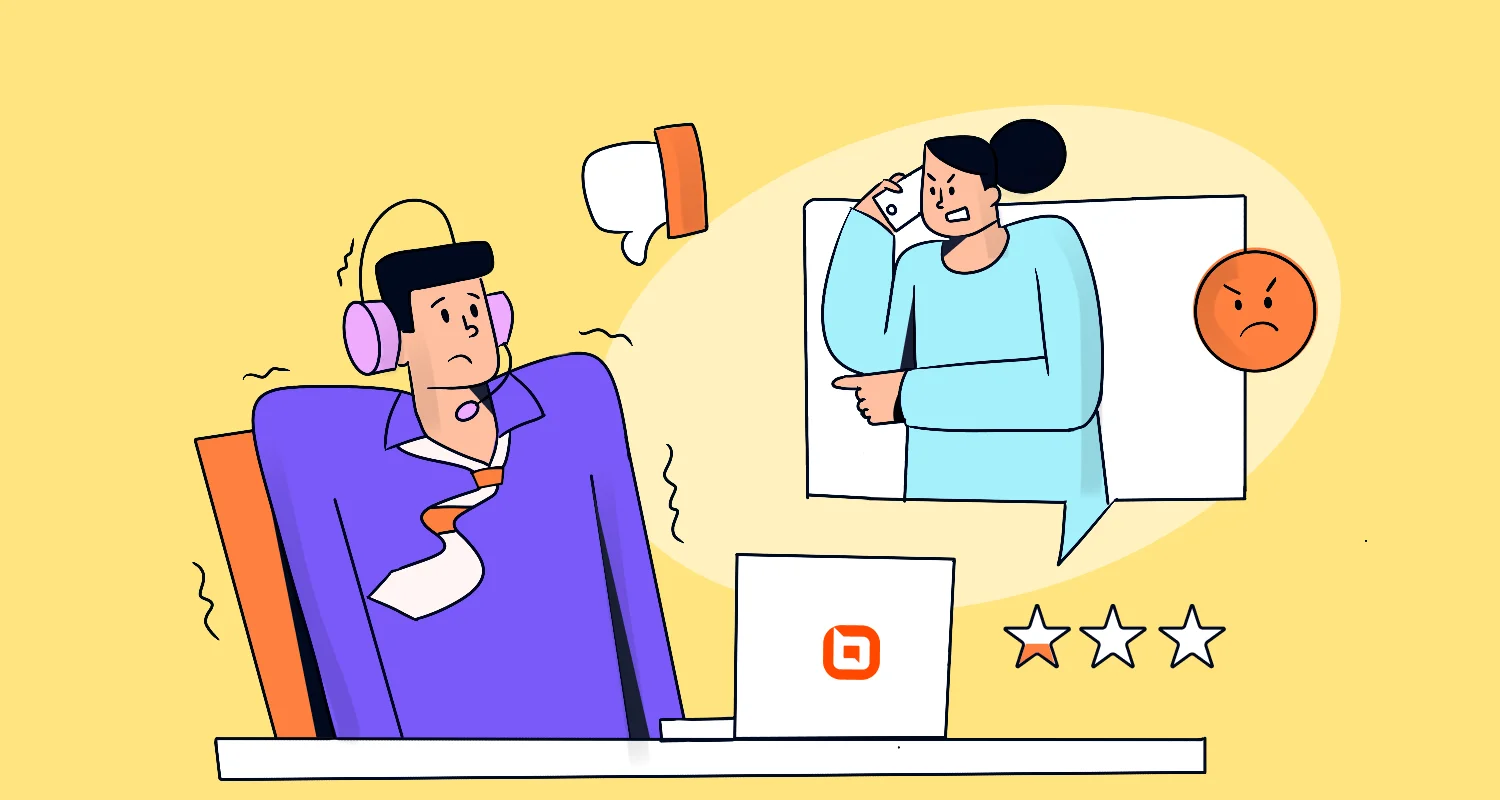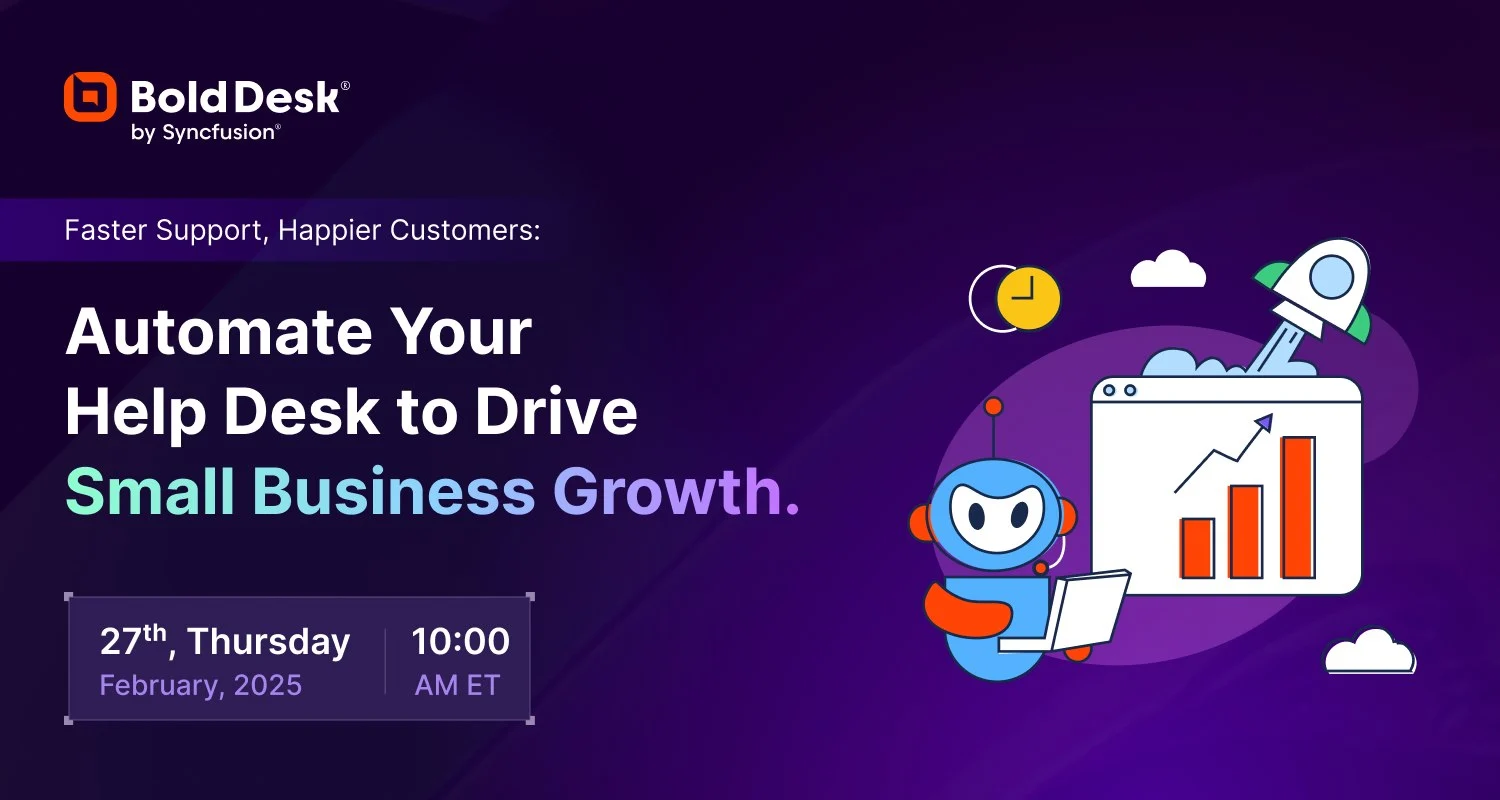The world of business is constantly changing. And as companies evolve, customers’ expectations also evolve. Companies cannot rely on intuition or old practices.
To stay ahead of the curve, they need to be updated with current market trends, customer service data, and customer behavior so they can adjust their operations and tailor their offerings.
Luckily, we have reviewed dozens of reports and surveys to compile a comprehensive list of useful statistics you can implement to transform your customer service.
In this blog, we explore different customer support statistics to paint a picture of the current business landscape and how the future looks like.
What are customer service statistics?
Customer service statistics are measurable data points that show the performance, quality, and efficiency of a brand’s customer service.
A point to note about statistics is; the information helps companies to evaluate how well their customer service offerings are performing.
Customer support data helps brands identify areas for improvement, capture market opportunities, and stay competitive.
Customer support statistics can be about:
- Customers’ experience with a brand or service
- Spending habits such as peak purchasing periods and desire for tailored offerings
- Changes in market trends
A good place to source customer service data is from interviews, customer satisfaction reports, and surveys. This data is reliable, so it provides valuable insights into customer behavior and expectations.
Why is customer support data so important?
Although companies usually collect customer service data with the aim of improving customer satisfaction, they also have the following benefits.
- Helps you identify areas for improvement: Statistics like customer retention and client churn rates provide insights into how customer service impacts customer loyalty. When companies understand these customer support data, they can implement strategies to retain more customers.
- Gives you insights to enhance customer experience: Businesses can identify trends to help improve customer service by analyzing customer service data and metrics such as response times and customer feedback.
- Helps you track and measure performance against industry standards: Statistics help brands gauge their competitiveness in the market by providing milestones to aspire towards.
- Promotes efficient making of decisions: Customer service statistics provide accurate data that you can use to make better decisions. Well-informed strategies help reduce costs, enhance efficiency, and improve customer experience.
- Helps you set business goals: Customer service statistics provide a basis for setting measurable goals, helping you push toward higher quality standards in customer service.
Examples of customer support statistics
Trends and patterns reveal much about what works and what doesn’t in a business. When businesses understand the trends and patterns surrounding their brands, they can begin developing better strategies for success.
The value of good customer service
Just as a steady heartbeat is essential for life, excellent customer service is vital for a thriving business. Below are some customer support statistics that show how important exceptional customer service is to a company.
- 94% of customers state that positive customer service experiences make them more likely to purchase again. (Statista)
- The same Statista study also shows that 82% of clients recommend a company to their friends when the customer service is excellent.
- 60% of customers in the US did more business with companies due to good customer service in the year 2020. (Statista)
- 90% of customers agree that customer service is one of the main reasons they choose a brand and stay loyal to it. (Microsoft Dynamics 365)

- 43% of clients are more likely to purchase products or services from a brand after a good customer service experience. (Khoros)
- A Salesforce study shows that 91% of consumers are more likely to purchase again after a great support experience.
- The same study also shows that 71% of clients make purchase decisions based on the quality of customer service.
- 94% of consumers who give a company a “very good” customer experience rating are likely to recommend the company to their friends and families. (Qualtrics)
- The same study also shows that 90% of consumers who give a company a high customer experience rating are likely to trust the company to care for their needs.
- 88% of clients say the experience a business offers is as important as its product or services. (Salesforce)
- Consumers believe that excellent customer service involves a friendly representative, quick issue resolution, favorable outcomes, convenience, and personalization. (The Netomi Pulse Report)
- Around 83% of clients consider good customer service an important driver of brand loyalty. (Statista)
These customer support statistics show that, indeed, while the business world is always evolving, the importance of excellent customer service remains an unchanging fact. Providing positive customer experiences will always be a cornerstone of successful businesses.
The cost of poor customer service
Exceptional customer service can be a powerful asset, but a single negative experience can have a devastating impact on your brand. Consider the following customer service data to see just how much.
- 70% of respondents say they’ll move to a competitor following a terrible customer experience. (Verint)
- 23% of consumers cite a lack of support channels as a reason they wouldn’t recommend a brand. (Mention Me)
- 77% of consumers say offering poor self-service support is worse than not offering any since it wastes time. (HigherLogic)
These statistics show that not being keen on your support offerings can impede your business’s growth. It is, therefore, crucial to adopt the necessary measures so you always provide consistent positive experiences.
The value of omnichannel support
Customers prefer to contact the brands they do business with using the channels of their choice. Therefore, providing omnichannel support can be what sets you apart in your industry.
- 61% of customers prefer digital channels when interacting with businesses. (Verint)
- 75% of customers use multiple channels to communicate with support. (McKinsey and Company)
- 62% of clients want to engage with brands across multiple digital channels, and 77% of consumers want brands’ in-house teams to communicate and collaborate so they don’t have to repeat themselves. (Khoros)
- 52% of customers say chat is their preferred channel for digital support. (NICE)
- 55% of customers expect a company response to a complaint posted on social media. (Arizona State University)
- There is a continuing increase in demand for omnichannel interactions, with 43% of customers expecting cohesive omnichannel experiences. (Forrester)
These customer support statistics show that offering omnichannel support is a great compliment to your customer service strategy.
Customer service data on automation and AI support
Artificial intelligence has revolutionized the way companies provide support. Businesses now use AI tools to analyze customer behavior, streamline support and reduce agent workload.

- A report by Capgemini shows brands experienced an improvement of about 6.7% in customer satisfaction and engagement in areas where they utilized AI.
- AI assistance benefits less-skilled agents. According to NNgroup, the lowest performing 20% of agents had their task throughput improved by 35% as a result of AI assistance.
- Access to AI tools improves the productivity of customer support staff by up to 14%. (National Bureau of Economic Research)
- 90% of companies using AI in their customer service report that the tools help them save on time and costs. (Salesforce)
- 86% of customers prefer brands that use AI. (Forbes)
From these customer support data, we can safely conclude that having AI as part of your support strategy can streamline your operations and improve your customer experience.
The importance of self-service options
Businesses are now embracing self-service as a way to empower their customers to troubleshoot issues on their own. This strategy lifts off some of the weight of support issues from your customer service agents.
- 61% of customers prefer self-service for simple issues. (Salesforce)
- 77% of customers view companies more positively if they offer self-service options. (HigherLogic)
- 81% of customers want self-service options in the brands they interact with. (NICE)
- 80% of high performers in service companies offer self-service options. (Salesforce)
These statistics show just how important self-service is to any business. Create a customer self-service portal to leverage the power of self-service.
Dealing with an angry customer
There are times when you’ll fall short of customer expectations, and this could leave them frustrated. Knowing how to apologize, be empathetic and come back from such situations is important.

- 83% of angry clients will switch brands after a negative customer support experience. (Enchant)
- 9% of customers would get annoyed after just ten minutes of waiting on hold. The figure rises to about 64% for wait times of twenty to thirty minutes. (Ringover)
- 7% of people felt frustrated when speaking to a company’s customer service team, while 29.2% felt angry. (Ringover)
- 66% of consumers become frustrated when they have to repeat information to different support staff. (Vonage)
This means you need to handle dissatisfied and angry customers with empathy and caution. Ensure you are always available to receive their queries and requests.
Why you should prioritize customer trust and loyalty
Customer retention is a powerful strategy for business success. The following customer service data illustrate how crucial it is to build healthy long-term relationships with your customer base.
- 57% of customers will spend more when they connect and bond with a brand, and 76% will buy from them over a competitor.
- 83% of customers say they’re more loyal to companies that provide consistency across departments. (Salesforce)
- 3% of consumers will refer their friends and family to brands they love. (Yotpo)
- Over 40% of consumers who have lost trust in a brand have stopped using it and started using products from its competitors. Another 40% reported they stopped using a brand and will never use it again. (Statista)
- 86% of clients are more likely to stay loyal to a brand that invests in customer onboarding after a purchase. (Wyzowl)
- 5% of shoppers will spend more on products if they’re loyal to a brand. (Yotpo)
- More than four out of five consumers surveyed said trusting the businesses they bought from was important. (Statista)
- Around 46% of consumers strongly agree that it is important to trust the businesses they buy from. (Statista)
- 65% of consumers cite trust as the most important quality for brand recommendation. This is followed by great customer service (58%). (Mention Me)
The customer service stats are clear. Investing in customer trust and loyalty directly leads to more sales and business growth. On the contrary, businesses that do not focus on trust and loyalty risk losing customers and revenue.
Customer loyalty programs are becoming more important
Customer loyalty programs are systems of rewards or exclusive benefits, such as gifts, points, or discounts, that brands offer to loyal customers.
The main goals of customer loyalty programs are usually to encourage more purchases and improve customer engagement. The following customer service data show why these programs are important.
- Around one-third of U.S. consumers reported they are open to premium loyalty programs, but their favorite brands do not offer them. (Statista)
- 56% of customers will purchase from a brand with a loyalty program. (Salesforce)
- 87% of Generation Z respondents state that they plan to join premium loyalty programs. Millennials and Generation X consumers followed with 85% and 79%, respectively. (Statista)
- 81% of respondents among Generation Z stated that loyalty or rewards programs impacted their decision to continue doing business with a brand. This share was 79% among baby boomers. On average, loyalty programs influenced buying decisions for nearly 8 out of 10 U.S. consumers. (Statista)
- 7 out of 10 Americans consider loyalty programs a leading factor in securing their loyalty towards their favorite brands. (Statista)
- 6 out of 10 consumers in the United States want discounts in return for joining loyalty programs. Discounts ranked as the most desirable, followed by earning points and rewards, cited by 58% of the respondents. (Statista)
- 48% of consumers mentioned joining a brand’s loyalty program to express their devotion to a brand or company. (Statista)
- Loyalty programs are becoming more popular among younger generations. Gen Z shoppers, for example, are twice as likely to join loyalty rewards programs (20%) compared to boomers (9%). (Capterra)
- 79% of consumers say they purchase from a brand more frequently because they participated in its loyalty program. (Statista)
- Most consumers are willing to provide their emails, gender, and names in exchange for discounts. (Capterra)
- The same Statista study also shows that 70% of U.S. consumers in a free loyalty program will always spend more time with the brand due to their participation in the program.
From the above customer support stats, we see that customer loyalty programs will not only help you gain more clients but also increase your sales and revenue, leading to faster business growth.
Customers prefer service personalization
Clients want to feel that the companies they do business with value and care for them. The following customer service stats illustrate this well.
- 73% of customers expect brands to understand and cater to their unique needs and expectations. (Salesforce)
- 43% of consumers consider flexible loyalty programs as an important feature when getting a personalized experience from a company. (Statista)
- 43% of surveyed online shoppers worldwide were willing to share their personal data like e-mail addresses or other information with companies to receive customized offers. (Statista)
- 52% of customers expect offers to always be personalized. (Salesforce)
- A study by CSA Research shows that 76% of online shoppers prefer to purchase products where information is in their native language. In addition, 40% of these customers will never buy products from websites in other languages.
- 66% of consumers will quit a brand if their experience isn’t personalized. (Twilio)
- 75% of consumers want brands to understand their needs, and 61% want that understanding reflected in branded communications. Consumer Insights
The customer service data shows that customer service personalization is a key strategy for retaining clients and enhancing the overall customer experience.
Below are some additional customer service data to help you make the right decisions.
- 75% of customers use multiple channels to communicate with support. (McKinsey and Company)
- 88% of clients are more likely to purchase again from companies that meet their expectations. This makes quality interactions essential to keep customers returning for more. (Salesforce)
- 3% of organizations use customer insights to inform product and service improvements. (NTTData)
Leverage customer service statistics to grow your business
Enduring businesses are often those that incorporate transformation positively within their organizations. Using these figures, you will enhance customer relationships and be able to promote loyalty, which is a factor critical to the success of the business in the long run.
Remember, trends are always changing, so you should always be on the lookout for the latest statistics in customer service. However, this list is a good place to start if you want insights to up your game.
Ready to implement these statistics? BoldDesk is the right place to start. Contact us to discover how BoldDesk can supercharge your customer service. Book a live demo or sign up for a free trial to begin today.
We hope this blog was insightful. Are there any important customer support stats that you may wish to add? Please share in the comment section below!
Related articles




